+++
PHENANTHRENE BTV: 1.39 ppb
Phenanthrene Brandeis-Bardin: 9.6 ppb or 6.9 TIMES AREA IV BTV
[PAH – http://www.cdc.gov/biomonitoring/Phenanthrene_BiomonitoringSummary.html:
“Phenanthrene is used in manufacturing dyestuffs and explosives and in biological research.”]
+++
PYRENE BTV: Drainage 2.54 ppb
Pyrene Brandeis-Bardin: 6 ppb or 2.4 TIMES AREA IV BTV
[PAH – http://www.cdc.gov/niosh/ipcsneng/neng1474.html:
“The substance can be absorbed into the body by inhalation, through the skin and by ingestion.”
&
“Exposure to sun may provoke an irritating effect of pyrene on skin and lead to chronic skin discoloration.”]
DIELDRIN BTV: 0.166 ppb
Dieldrin Brandeis-Bardin: 0.52 ppb or 3.1 TIMES AREA IV BTV
[INSECTICIDE – https://www.atsdr.cdc.gov/toxfaqs/tf.asp?id=316&tid=56:
“Aldrin and dieldrin build up in the body after years of exposure and can affect the nervous system. Aldrin has been found in at least 207 of the 1,613 National Priorities List sites identified by the Environmental Protection Agency (EPA). Dieldrin has been found in at least 287 of the 1,613 sites.”
&
“Neither substance occurs naturally in the environment. From the 1950s until 1970, aldrin and dieldrin were widely used pesticides for crops like corn and cotton. Because of concerns about damage to the environment and potentially to human health, EPA banned all uses of aldrin and dieldrin in 1974, except to control termites. In 1987, EPA banned all uses.”
&
“Air, surface water, or soil near waste sites may contain higher levels.”
&
“In animals, oral exposure to lower levels for a long period also affected the liver and decreased their ability to fight infections. We do not know whether aldrin or dieldrin affect the ability of people to fight disease.”]
GAMMA BHC – Lindane BTV: 0.0717 ppb
Gamma BHC – Lindane Brandeis-Bardin: 0.34 ppb or 4.7 TIMES AREA IV BTV
[PESTICIDE – http://www.cdc.gov/niosh/ipcsneng/neng0053.html:
aka Lindane
“The substance can be absorbed into the body by inhalation through the skin and by ingestion.”
&
“EFFECTS OF LONG-TERM OR REPEATED EXPOSURE:
The substance may have effects on the liver. Tumours have been detected in experimental animals but may not be relevant to humans.”]
HEPTACHLOR EPOXIDE BTV: 0.156 ppb
Heptachlor Epoxide Brandeis-Bardin: 0.24 ppb or 1.5 TIMES AREA IV BTV
[PESTICIDE – https://www.atsdr.cdc.gov/toxfaqs/tf.asp?id=744&tid=135:
“Little is known about their health effects in humans. At high levels, they may cause damage to your liver and nervous system. Exposure of animals during gestation and infancy can result in damage to the nervous system and the immune systems. Heptachlor and heptachlor epoxide have been found in at least 210 and 200, respectively, of the 1,684 National Priority List sites identified by the Environmental Protection Agency (EPA).”
&
“Heptachlor epoxide can stay in the soil and water for many years.”
&
“How might I be exposed to heptachlor and heptachlor epoxide?
• Eating fish, dairy products, and fatty meats from animals exposed to heptachlor in their food.
• Breast milk from mothers who had high exposures can expose breastfed infants.
• Drinking water, breathing air, or touching soil at waste sites that contain these substances.”]
MOLYBDENUM BTV: Santa Susana Drainage 1.86 ppm
Molybdenum Brandeis-Bardin: 10.7 ppm or 5.8 TIMES AREA IV BTV
[METAL – http://www.cdc.gov/biomonitoring/Molybdenum_BiomonitoringSummary.html:
“Elemental molybdenum is a silver-white, hard metal widely used to add strength and hardness and retard corrosion in metal alloys. Compounds of molybdenum are also used as corrosion inhibitors,”
&
“Human health effects from molybdenum at low environmental doses or at biomonitored levels from low environmental exposures are unknown.”]
SELENIUM BTV: Santa Susana Drainage 0.595 ppm
Selenium Brandeis-Bardin: 1.04 ppm or 1.8 TIMES AREA IV BTV
[METAL – https://www.atsdr.cdc.gov/ToxProfiles/tp92.pdf:
457 pp
p 23/457: “People may be exposed to higher-than-normal levels of selenium at hazardous waste sites by swallowing soil or water, or by breathing dust. In some parts of the United States, especially in the western states, some soils naturally have higher levels of selenium compounds. Some plants can build up selenium to levels that harm livestock feeding on them. In these areas, people could be exposed to too much selenium if they eat a lot of locally grown grains and vegetables or animal products that have built up high levels of selenium. People may also be exposed to selenium from industrial sources.”
P. 24/457: “Hazardous waste sites at which selenium is present could represent a major source of exposure. The way that selenium can enter the body from a particular site depends on such factors as whether vegetables are grown in soil in which selenium from the site has been deposited, whether water at the site contains selenium and is able to flow into drinking water supplies, and whether selenium dust blows into the air.”
P. 24/457: “Selenium can build up in the human body, however, if exposure levels are very high or if exposure occurs over a long time. The amount that builds up in the body depends on the chemical form of the selenium. It builds up mostly in the liver and kidneys but also in the blood, lungs, heart, and testes. Selenium can build up in the nails and in hair, depending on time and amount of exposure.”
P. 25/457: “Even if mildly excessive amounts of selenium are eaten over long periods, brittle hair and deformed nails can develoP. In extreme cases, people may lose feeling and control in arms and legs.”
P. 271/457: “Selenium is estimated to be the 69th most abundant element in the earth’s crust, with an average concentration of 0.05–0.09 mg/kg (Glover et al. 1979).”
[ER – Therefore 1.04 ppm Brandeis-Bardin sample is 11.6 to 20.8 times Earth’s average soil selenium concentration strongly suggesting SSFL origins.
P. 271/457: “The disposal of selenium contaminated waste water has resulted in elevated selenium levels in sediments of Lake Belews, North Carolina. The concentration of selenium in sediments ranged from 4 to 12 μg/g (pre-1986), but has dropped to 1–4 μg/g (1996) due to the discontinued release of selenium laden waste water from a local coal fired power plant (Lemly 1997).”
[ER – By comparison, this means the 1.04 ppm Brandeis-Bardin sample is 86.7 to 260 times elevated selenium sediments and 260 to 1,040 times recovered selenium sediments.]
BETA BHC BTV: 0.169 ppb
Beta BHC Brandeis-Bardin: 1.3 ppb or 7.7 TIMES AREA IV BTV
[PESTICIDE – http://www.cdc.gov/niosh/ipcsneng/neng0796.html SAYS SAME AS BETA-HEXACHLOROCYCLOHEXANE:
“PREVENT DISPERSION OF DUST! STRICT HYGIENE! AVOID EXPOSURE OF (PREGNANT) WOMEN!”
&
“The substance decomposes in a fire, producing very toxic fumes including phosgene (see ICSC 0007) and hydrogen chloride (see ICSC 0163).”
&
“The substance can be absorbed into the body by inhalation of its aerosol, through the skin or by ingestion.”
&
“EFFECTS OF LONG-TERM OR REPEATED EXPOSURE:
The substance may have effects on the blood, liver, kidney. This substance is possibly carcinogenic to humans. Animal tests show that this substance possibly causes toxic effects upon human reproduction.”
“It is strongly advised that this substance does not enter the environment.”]
HEPTACHLOR BTV: 0.143 ppb
Heptachlor Brandeis-Bardin: 0.54 ppb or 3.8 TIMES AREA IV BTV
[PESTICIDE – https://www.atsdr.cdc.gov/toxfaqs/tf.asp?id=744&tid=135:
“Heptachlor was used extensively in the past for killing insects in homes, buildings, and on food crops. These uses stopped in 1988. Currently it can only be used for fire ant control in underground power transformers.”
&
“How likely are heptachlor and heptachlor epoxide to cause cancer?
Lifetime exposure to heptachlor resulted in liver tumors in animals. The International Agency for Research on Cancer (IARC) and the EPA have classified heptachlor as a possible human carcinogen. EPA also considers heptachlor epoxide as a possible human carcinogen.”
&
“People who live in homes where heptachlor was used for termite control or on farms where heptachlor was used on crops may have a higher risk of exposure through contaminated crops, soil, water, and air. To avoid exposure from contaminated soil, you should discourage your children from eating dirt. Make sure they wash their hands frequently and before eating. Discourage children from putting their hands in their mouths or other hand-to-mouth activities.”]
2,4,5-TP BTV: 0.474 ppb
2,4,5-TP Brandeis-Bardin: 0.98 ppb or 2.1 TIMES AREA IV BTV
[HERBICIDE – ALSO NAMED SILVEX https://www.atsdr.cdc.gov/spl/resources/1992_atsdr_substance_priority_list.html WHERE IT’S #242 AND http://sitem.herts.ac.uk/aeru/ppdb/en/Reports/300.htm:
Respiratory tract irritant & Skin irritant & Eye irritant]
+++
2,4,5-T BTV: 0.891 ppb
2,4,5-T Brandeis-Bardin: 2.1 ppb or 2.4 TIMES AREA IV BTV
[HERBICIDE – http://www.cdc.gov/niosh/idlh/93765.html:
“Immediately Dangerous to Life or Health Concentrations (IDLH)”
&
“Colorless to tan, odorless, crystalline solid.”]
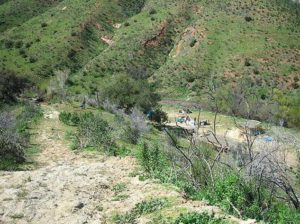


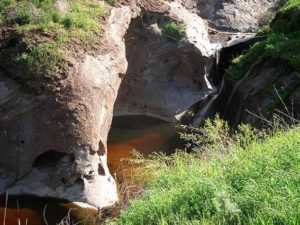
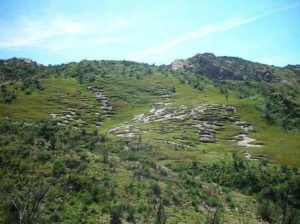
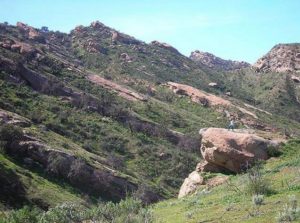
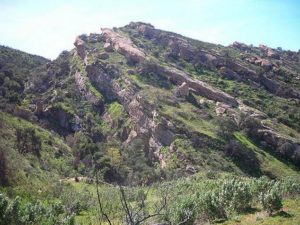
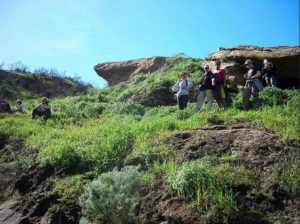
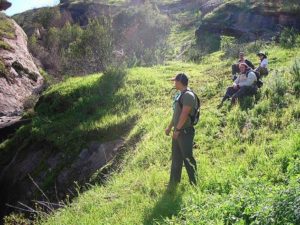












Recent Comments